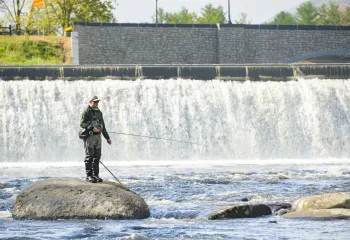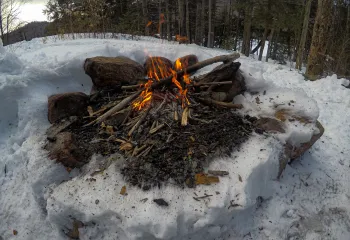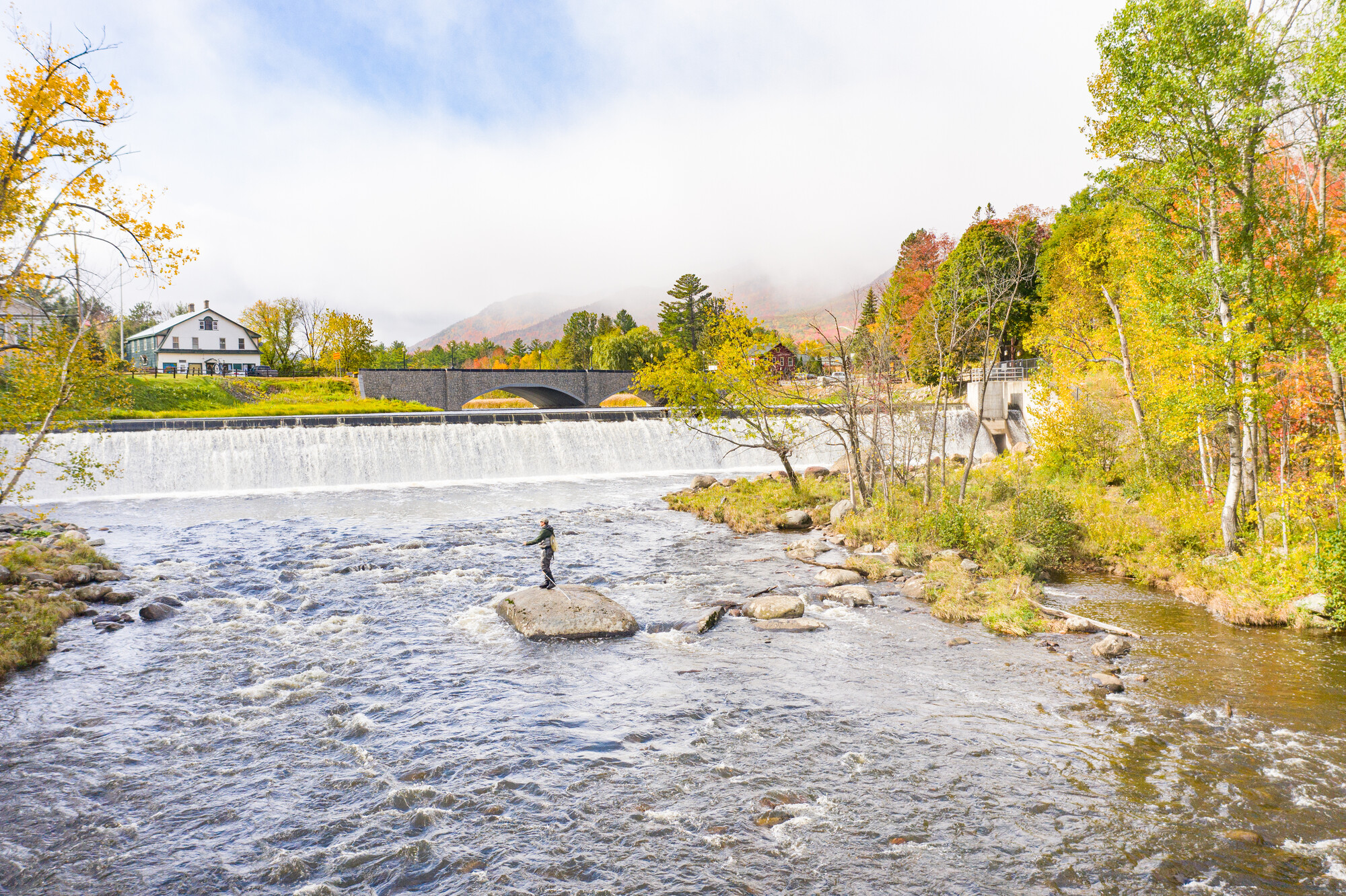
The Ausable River is a fly fishing paradise. Seriously, what’s not to love? The trout are plentiful. The terrain is challenging and unique. The views are beyond compare. Access is a breeze. Let’s face it: if you want to fly fish in the Adirondacks, the Ausable River is the place to be.
But there’s more to it than casting the line.
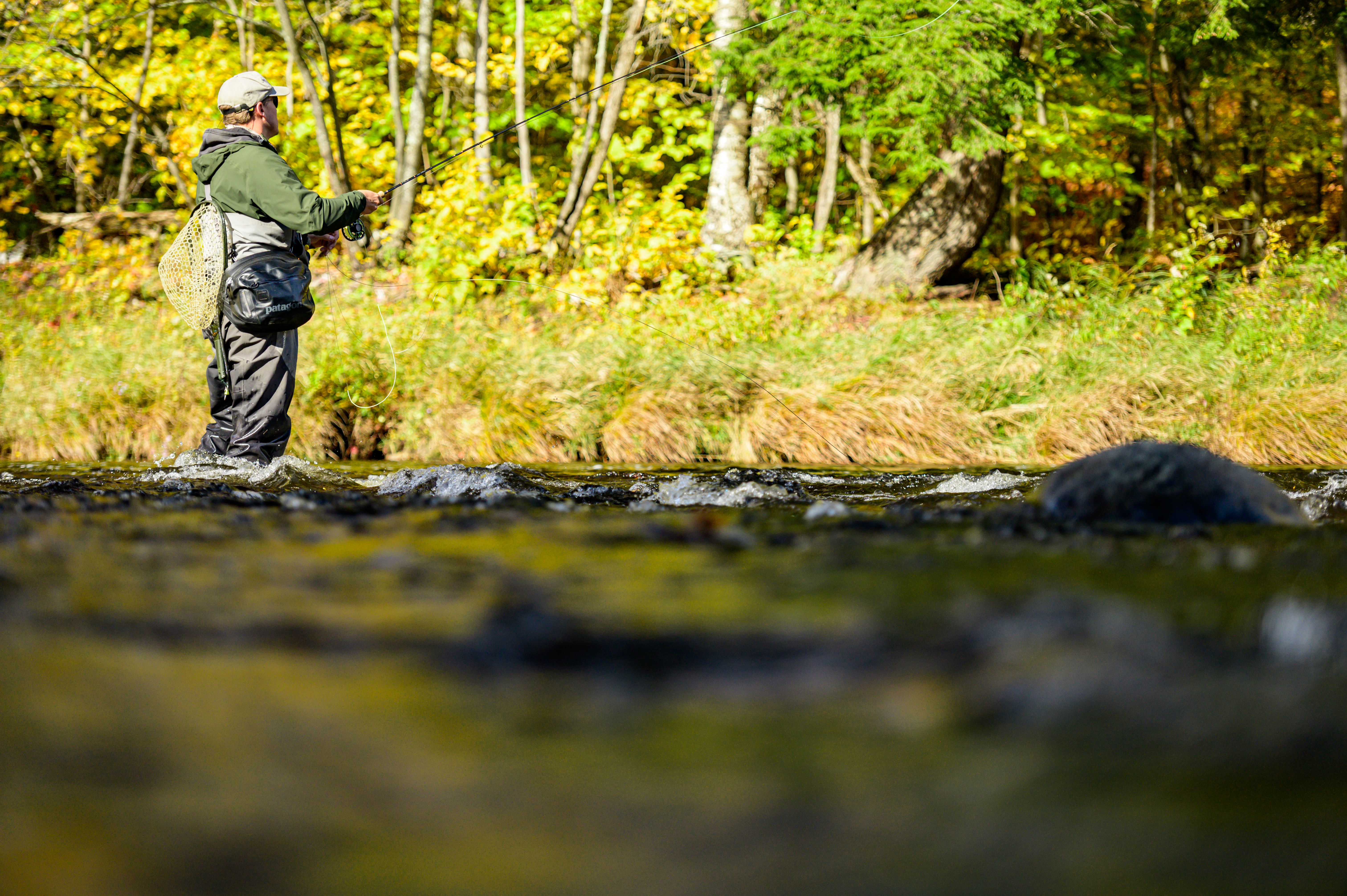
Fishing responsibly is a huge part of the equation. This means checking and cleaning gear to prevent the spread of non-native invasive species, abiding by local rules and regulations, and acting in the fish’s best interest.
Since trout season began on April 1, now is a perfect time to review best practices and clean gear in preparation for your spring fly fishing trip!
Bring on the trout
The Ausable River is home to three species of trout, including the famed brook trout. Brook trout thrive in the cold water and are sought by many anglers. New York state even loves brook trout so much it's the state fish. In fact, if you’re in Wilmington, stop to check out the trout and fly art near the river!
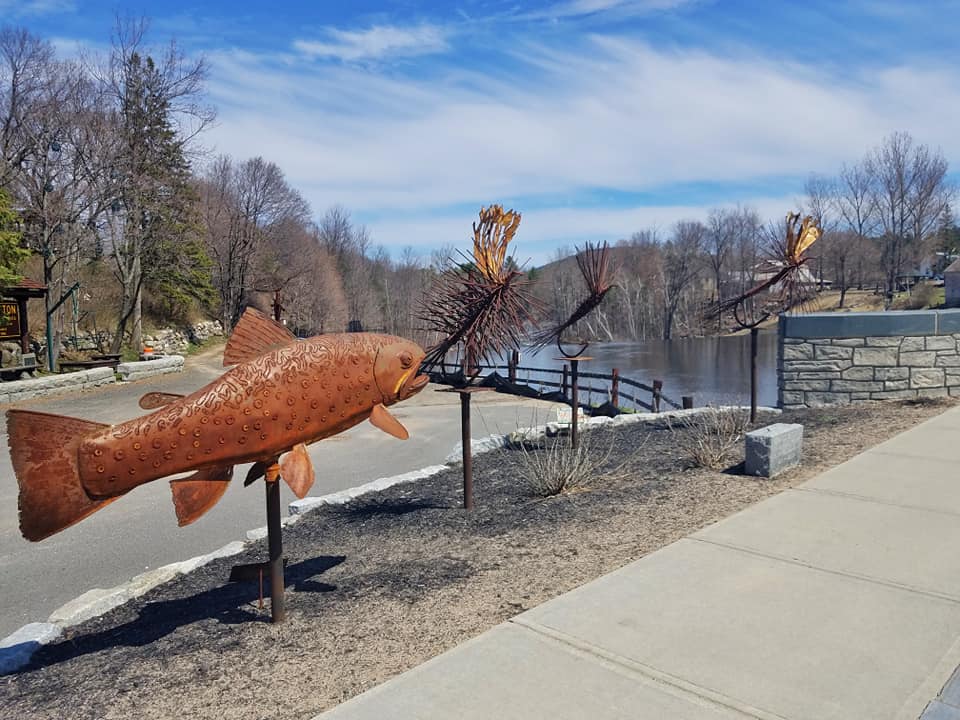
Spring cleaning
As we’re all doing some spring cleaning at our homes, it’s important to remember that fishing gear should be cleaned as well. Water-based activities, like fly fishing, can spread non-native aquatic invasive species to new locations. Plants, animals, and even microscopic organisms can hitch a ride on gear and, if gear is not cleaned, these “hitchhikers” can be introduced into new bodies of water. These non-native species can be harmful to fisheries and ecosystems. And they have the potential to foul recreational opportunities.
Now you may find yourself asking “what can I do?” Thanks to devoted organizations, like the Ausable River Association (AsRA), it’s easy to take spread prevention measures. AsRA places Wader Wash Stations along the river at popular fishing access locations. The stations are available for use to kill any non-native invasive species that may be attached to waders. Just 60 seconds of soaking (in a salt solution, which kills some invasive species but does not harm equipment) and then drying helps avoid transporting such invasive species as Didymo (rock snot) and New Zealand mud snail.
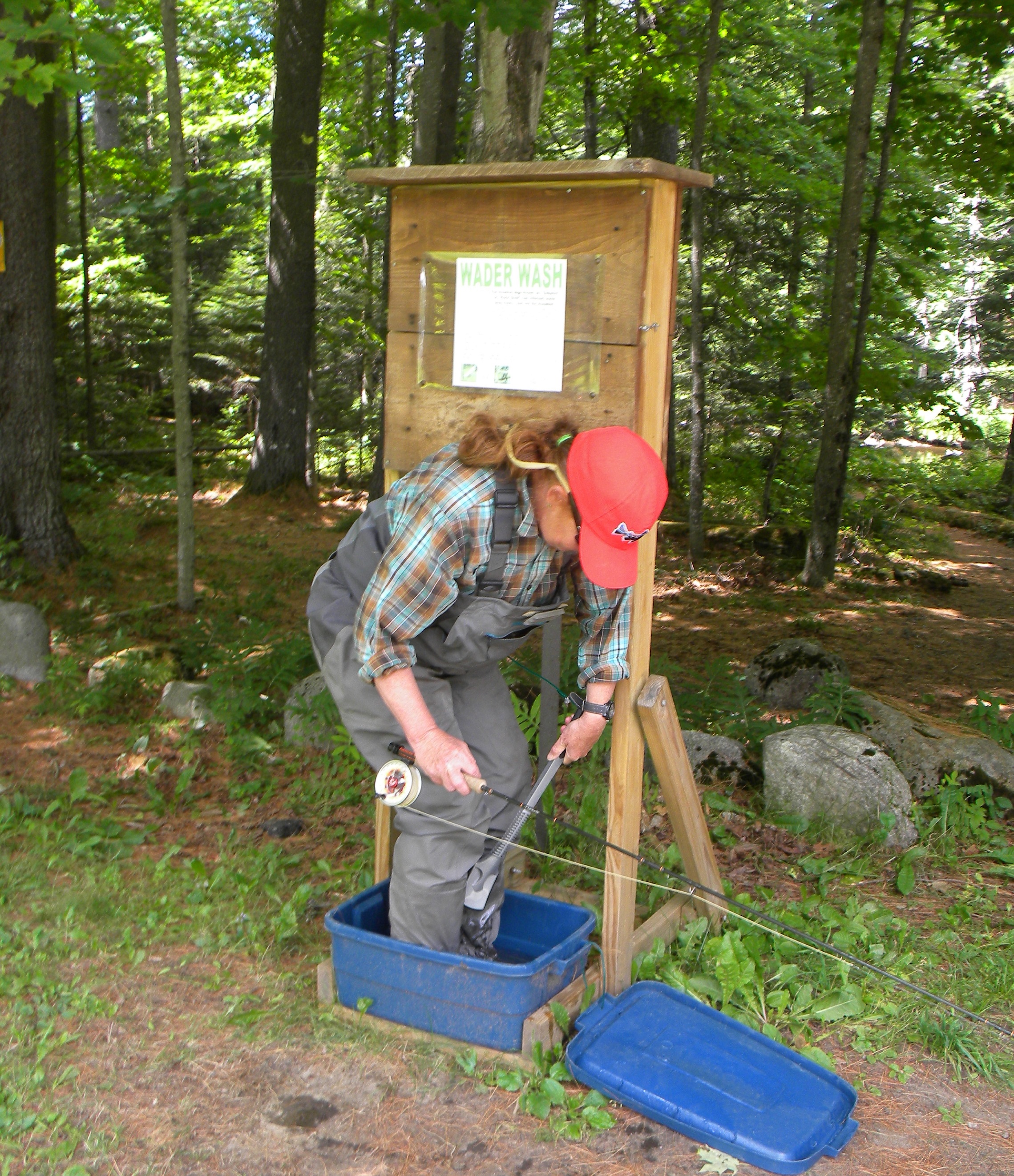
It’s just like the old saying, an ounce of prevention is worth a pound of cure. Aquatic invasive species can disrupt fish habitat and outcompete natives. And if you do your part to clean your gear, you’re helping preserve a world-class fishery.
Best practices
Fishing responsibly goes beyond cleaning gear. From knowing regulations to packing out waste, it’s important to act in the best interest of the environment and other fishermen and women. The West Branch Ausable River has abundant public access, but that is not the case everywhere. Please observe private or posted signs and know the regulations for the area you’re fishing. If you’re new to fishing this area, talk to local guides! Their experienced first-hand knowledge can direct you to the best locations and even help you decide what fly to use.
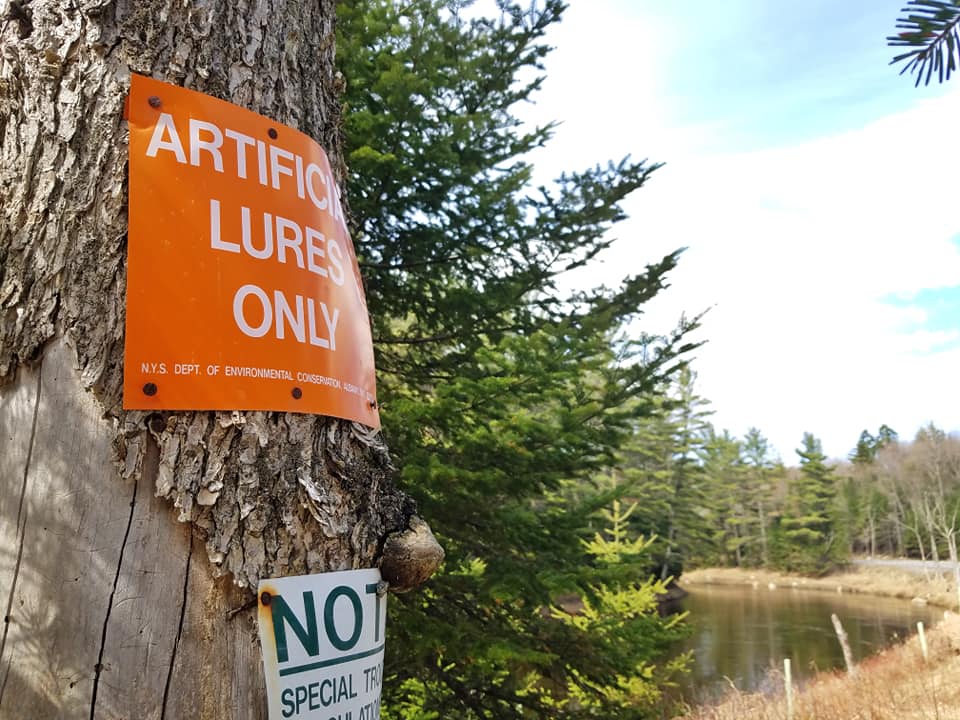
Live bait is not permitted here. Artificial lures are a better choice for protecting the fishery. Live bait, such as minnows and non-native crayfish, can displace native species, feed on fish eggs, and spread pathogens.
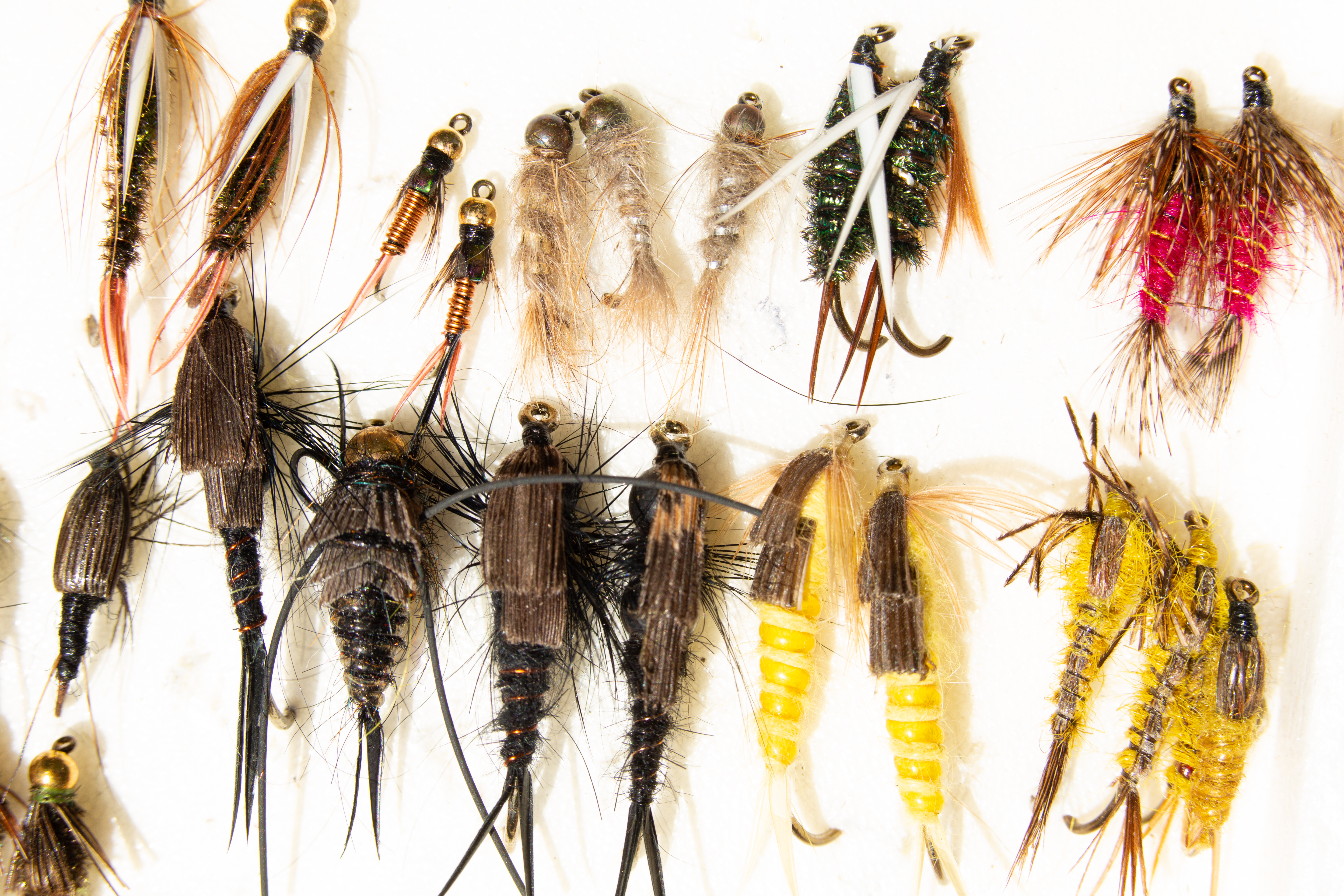
Remember how brook trout prefer cool waters? Well, it's important to keep that top-of-mind when planning fishing trips. When waters get too warm (upper 60s or above, usually), fish can become stressed. If you fish when the water is cooler, the fish have a better chance at surviving.
Native trout populations also have a better chance at survival if anglers follow catch-and-release ethics, whether voluntarily or not. This allows more fish to stay in the ecosystem and reproduce, and gives anglers a better opportunity to catch something in the future.
Other things to keep in mind are:
- Use barbless hooks and carry hook removal devices
- Wet your hands and nets before handling a fish
- Minimize time a fish is out of water
- Use lead-free materials
- Take care to not walk on spawning beds
- Stream banks are sensitive; don’t cause any unnecessary damage
- Revive fish before release
And, of course, please make every effort to respect other anglers enjoying the resource.
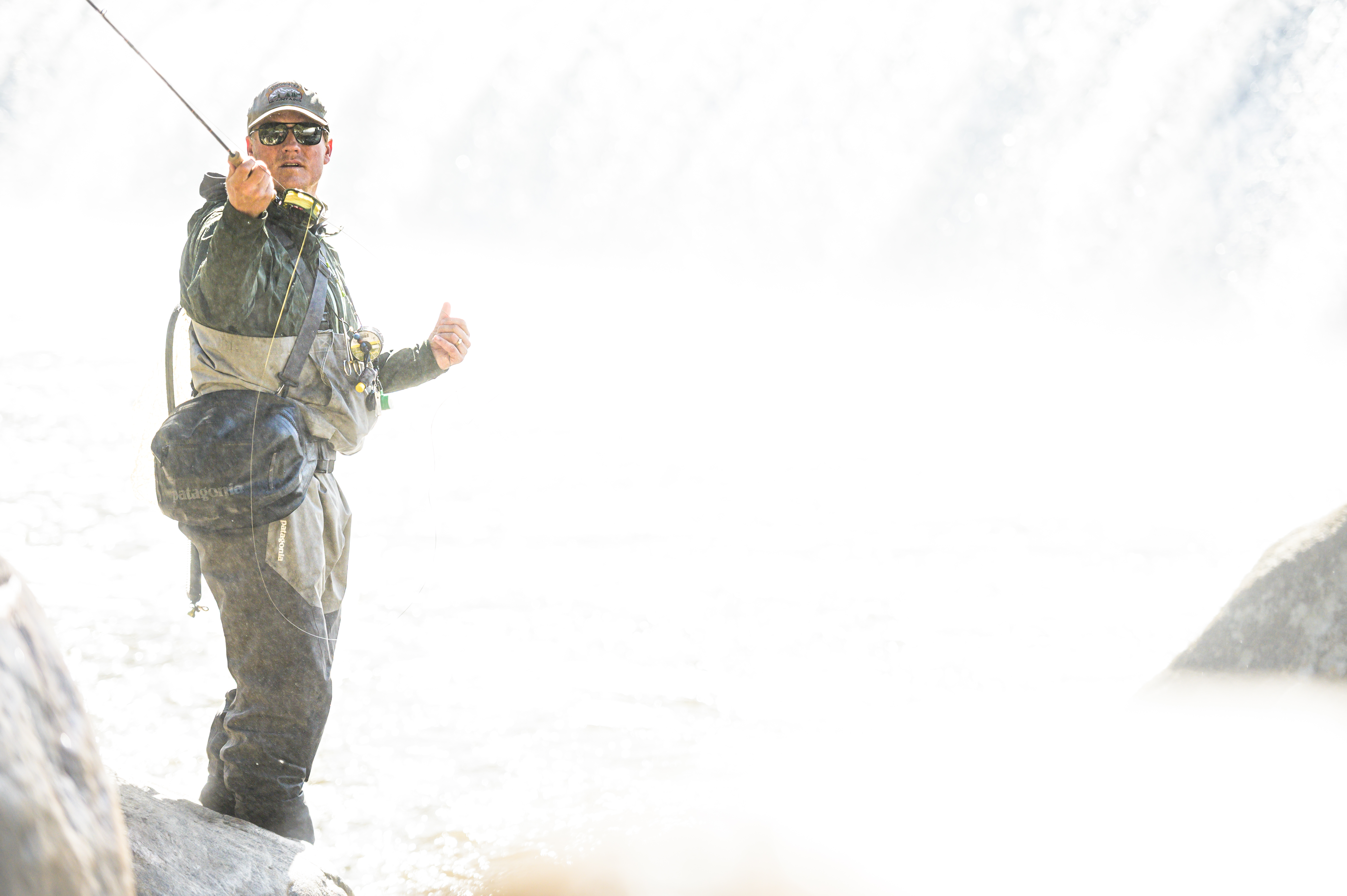
Love Your ADK
The magic of the Adirondacks is the result of previous generations taking a long view and protecting the mountains, lakes, and rivers within the Blue Line. That tradition continues today as we support and encourage everyone to practice Leave No Trace ethics, which help protect the lands and waters of the Adirondacks. By pledging to Love Your ADK, you’re committing to protect, among other things, lakes, rivers, streams, and ponds.
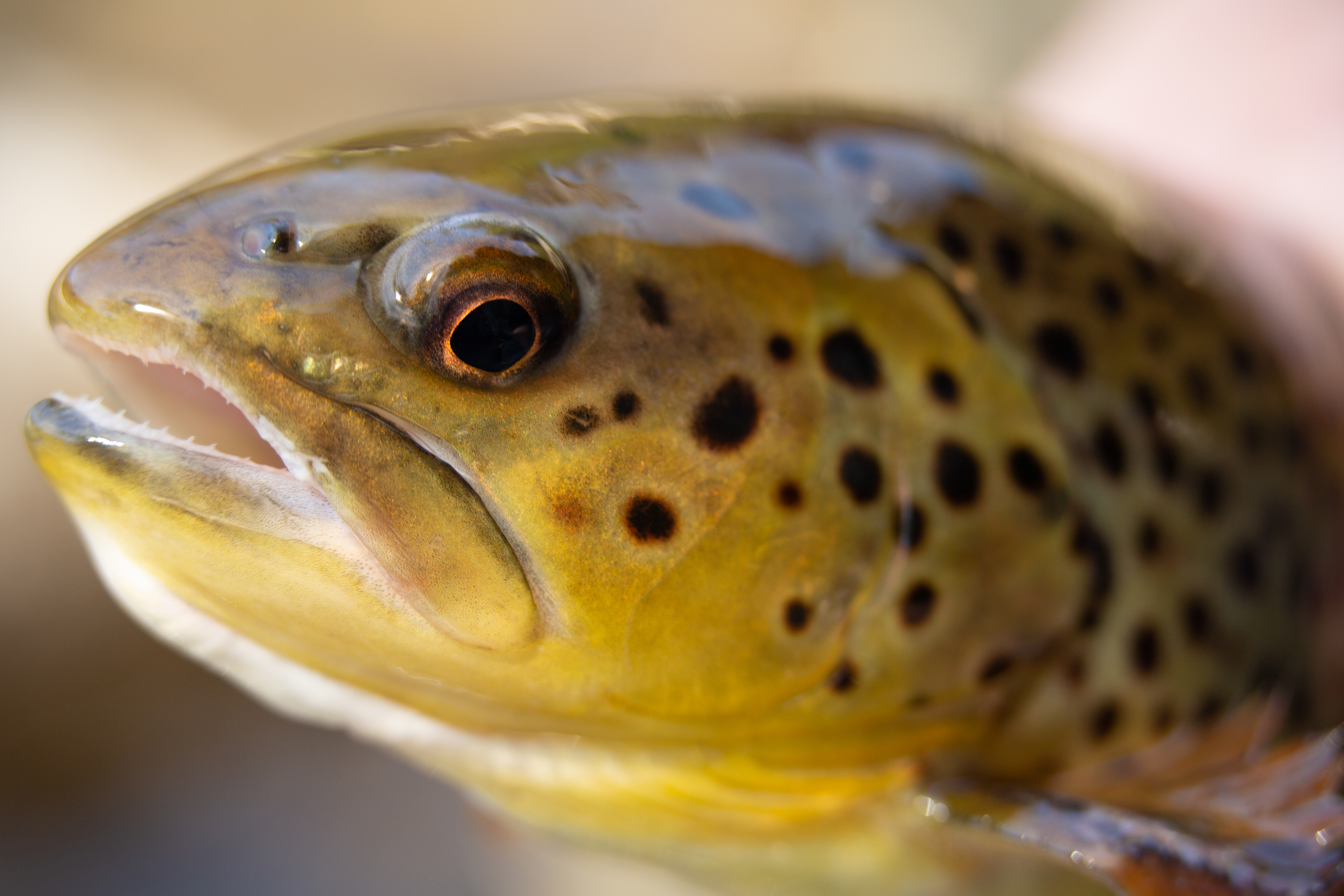
What are you waiting for? Book your stay and come fly fishing on the awe-inspiring Ausable River today!
Wader Wash Station photo provided by the Ausable River Association.
The reason you may see media of people not wearing masks on our website is because footage is from prior years. More than ever we all need to be vigilant about maintaining social distance of 6 feet or more and wearing masks when we cannot social distance.

